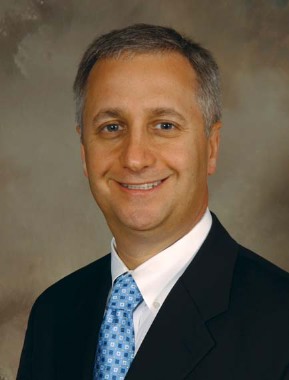The percentage of any U.S. women aged 25-44 who had ever sought infertility services in the United States dropped 3 percentage points from 1995 to 2006-2010, a survey showed. Yet women who had current fertility problems sought infertility services at similar rates from 1982 through 2006-2010.
As in previous surveys, the use of infertility services was higher among white women and women who were married or formerly married, with higher levels of education and/or income. "Reasons for the disparities in use of infertility services may include access barriers such as the significant cost of medical services for infertility and the lack of adequate health insurance to afford the necessary diagnostic or treatment services," said Anjani Chandra, Ph.D., of the National Center for Health Statistics, and her colleagues in the Jan. 22 report from the center. "Numerous previous analyses have shown that women who make use of medical help for fertility problems are a highly selective group among those who have fertility problems."
The findings are based on interviews with 12,279 U.S. women and 10,403 U.S. men, all aged 15-44, conducted from June 2006 through June 2010 for the National Survey of Family Growth. The report found that 17% of women aged 25-44 years had ever used infertility services in 2006-2010, down from 20% in 1995. Similarly, the percentage of nulliparous women with current fertility problems continued to decline from 56% in 1982 and 46% in 1995 to 38% in 2006-2010. Yet across all women aged 25-44 with fertility problems, service-seeking rates did not change much during those years, remaining at 41%-46%, Dr. Chandra reported (Natl. Health Stat. Rep. 2014;73:1-19).
The decline in service seeking among nulliparous women with current fertility problems "may stem from overall patterns of delayed childbearing," the authors wrote, "such that more women are attempting to have their first child at older ages, possibly beyond age 44, and are less likely to recognize a need for infertility services" within the younger age range.
The report compared rates of seeking infertility services and the characteristics of women and men seeking them based on the National Survey of Family Growth from 1982, 1988, 1995, 2002, and 2006-2010, focusing on data collected during the last survey.
For the survey, infertility services included those used both to help women get pregnant and to prevent miscarriages (beyond standard prenatal care), regardless of whether the women or their partners have a specific fertility problem. In questions for women, such services included advice (such as intercourse timing), infertility testing for either partner, medications for ovulation, surgery for blocked fallopian tubes, artificial insemination, and "other medical help," which included surgery or drug treatment for endometriosis, in vitro fertilization (IVF) or other assisted reproductive technology, surgery or drug treatment for uterine fibroids, other female pelvic surgery, or other medical help.
Men were asked questions about their or their partners’ use of the following services: advice, infertility testing, ovulation drugs, surgery for blocked fallopian tubes, artificial insemination, varicocele treatment, and other medical help (including assisted reproductive technology).
The services most commonly used by women aged 25-44 in 2006-2010 included advice (9.4% of all women, 29% of those with fertility problems), infertility tests (7.3% and 27%), services to prevent miscarriage (6.8% of all women), and ovulation drugs (5.8% of all women and 20% of those with fertility problems). Less common services were artificial insemination (1.7%) and surgery for blocked fallopian tubes (1.3%), followed by assisted reproductive technology, used by 0.7% of women in this age group.
The largest disparities in 2006-2010 among those seeking infertility services centered on income, educational attainment, and race/ethnicity, both for all women and for women with current fertility problems. For example, 21% of women aged 25-44 with at least a bachelor’s degree sought any infertility service, and 18% sought medical help to get pregnant. Yet among women in that age group with less than a bachelor’s degree, only 15% sought any infertility service and 10% sought medical help to get pregnant.
A similar pattern was seen among women in that age group with current fertility problems. Among those with at least a bachelor’s degree, 58% sought any infertility service and 56% sought medical help to get pregnant, but among those with less than a bachelor’s degree, only 33% sought any infertility service and 27% sought medical help to get pregnant.
Meanwhile, only 13% of women aged 25-44 with household incomes below the federal poverty level sought any type of infertility service, compared with 21% of women living in households with incomes at 400% of the poverty level or higher.


